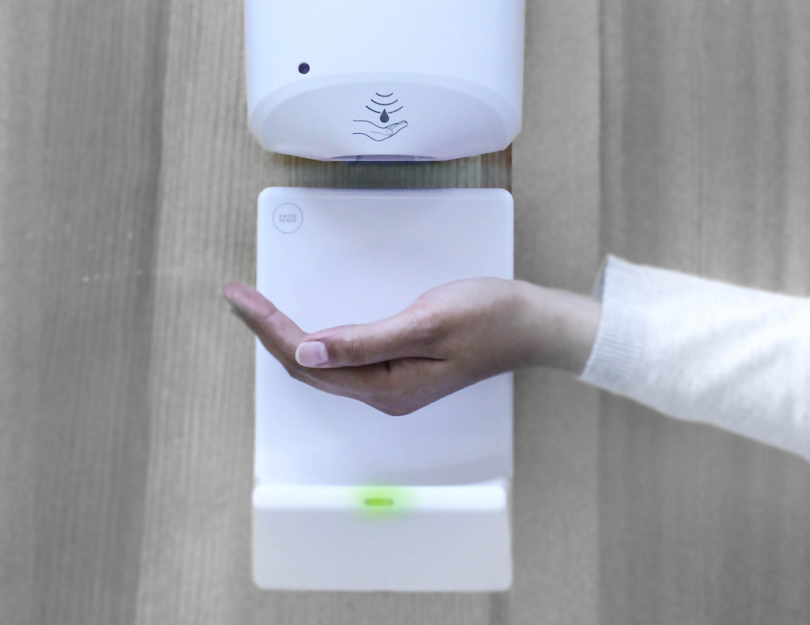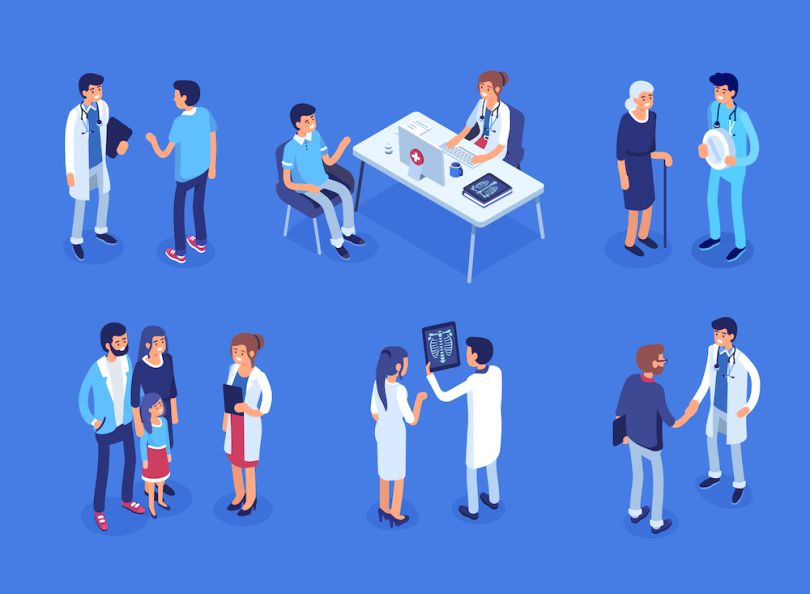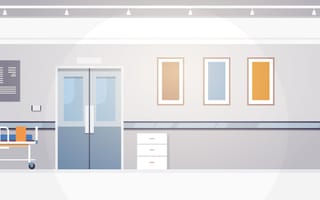The ping of the latest calendar reminder, the “knock brush” clack of another Slack notification, one more New York Times push alert with the latest election update — any remotely digital person knows the steady-drip anxiety that is alert exhaustion. For healthcare professionals, who work in increasingly alert-saturated environments, the fatigue effect is even more pronounced — and much more costly.
For years now, medical literature has warned that “the growing number of prompts may be counterproductive.” Indeed, alarm fatigue is a serious enough issue to rank among the top ten health technology hazards of 2020, according to medical safety firm ECRI Institute.
The statistics paint a grim picture, too. More than 600 alarm-related hospital deaths occurred between 2005 and 2012, according to the Food & Drug Administration and The Joint Commission. Yet the TJC also found that some 85 to 95 percent of the thousands of daily alarms that some practitioners face “don’t require any intervention.”
The overload is no picnic for patients either.
For these reasons, SwipeSense deliberately avoided alerts in the design of its product — a set of IoT “badges” that gather data on when healthcare workers disinfect their hands, and where nurses are making stops during their rounds, all geared toward driving better, safer habits.
“It’s actually something that we thought a lot about in the initial design [phase] — whether we should give people an audible nudge or some sort of vibrating notification,” Jori Hardman, director of engineering at SwipeSense, told Built In. The device design went through more than 70 iterations before being finalized. In the end, they decided against notifications.

Don’t Sound the Alarm
Here’s how it works. The badges clip behind nurses’ ID cards during shifts and communicate with sensors outfitted onto hand sanitation dispensers; the badges can also attach to medical equipment, to help keep track of valuable (and expensive) devices. The data is transmitted in real time across a Bluetooth wavelength to the hospital’s cloud.
Beyond tracking hand-washing habits and assets, there are trickle-up advantages. Hospital operations staff can use the data to plug whatever holes are spotted in nurses’ rounds, thereby shoring up avoidable harm. “Preventable infections, preventable falls — these things can be solved with the simple solution of just seeing your patients more often,” Hardman said.
Also, more data means sharper insight into best medical practices — and, potentially, how to reproduce them at scale. Maybe one doctor routinely performs a procedure for half the cost with better results than their colleagues, Hardman hypothesized. “Now you can understand what assets were in that room, what was used, how many nurses or physicians were supporting,” he said. “We suddenly have a lot of deep visibility.”
That said, it’s hard to glean insights from a data tracker that’s been chucked in a drawer — which is exactly where some incessantly beeping or buzzing contraption would likely end up. “There’s already alert fatigue, especially among nurses, who have so many call bells going off,” Hardman said. “We just didn’t want to add one more buzz. That’s when people just start taking them off.”
Another surefire way to discourage buy-in is to burden users with additional steps in their workday. “Workflows have been established in hospitals for a long time,” Hardman said. “The worst thing you can do for adoption is throw a wrench into that workflow and make people do something that they don’t normally do.”
He invokes another device on the market designed to promote hand hygiene, which requires users to hold their hands for several extra seconds under a sensor that detects whether alcohol sanitizer is present. “That’s a way to get real-time compliance, but it’s so cumbersome to have to remember, ‘OK, I can’t just wash my hands or not to wash my hands,’” he said.

Tending to Ailing UX
Clinicians themselves have been thinking about how to better tackle the alert-fatigue epidemic since at least 2012, when a panel of medical and pharmacological experts from both academia and the commercial sector, fed up with excessive alerts, deemed 33 drug-drug interactions (DDIs) low priority enough to not necessitate an interruption.
More recently, researchers at St. Jude Children’s Research Hospital combed through their alert data and found that many alarms were redundant. (For example, alarms were sounding when caregivers would apply drugs that might raise a patient’s potassium level — something staff was already closely tracking.) The hospital made changes to how nearly half its alerts were triggered, according to findings published last year.
So if everyone’s sick of the endless notifications and digital shoulder-taps, why do alarm-blasting devices continue to find homes? One possibility relates to purse-string control.
Healthcare practitioners — the ones actually using the equipment — appear to be decreasingly involved in tech-buying decisions. Situations in which medtech purchasing decisions were led primarily by procurement officers, rather than practitioners, doubled between 2016 and 2018, according to Bain’s annual Front Line of Health Care Report. A concurrent trend saw line-of-business management gain major increases in controlling healthcare IT spending, according to a 2018 Black Book Research survey.
Healthcare is also a beast all its own. The complex nature of the industry — costly (yet cost-conscious), byzantinely regulated, beset by consolidation — conspires to create a “rusty UX purgatory,” journalist Amy Standen said last year on Wireframes, the user experience podcast she produces.
“There’s just not much room for innovation and improvement in an industry that’s both cloaked in secrecy and dominated by a few big players,” she noted.
But the Chicago-based IoT startup has so far had success in penetrating the often-slow-to-adapt health world. SwipeSense is now used in medical facilities of all kinds — private, research and educational, and VA hospitals — ranging from California to New York. And the results have been promising. A hospital in suburban Charlotte, North Carolina, saw overall compliance rise nearly 30 percent in under three months, up to 81 percent, according to a recent case study. SwipeSense clients on average have boosted hand-hygiene from 45 to 63 percent compliance over 15 months, according to the company.
Other healthcare product manufacturers have also stepped up to help quiet things down. California-based First Databank offers a drug alert management software called Alertspace, which lets clinicians safely customize alert frequency. And Johns Hopkins Hospital employs software made by Connexall, a Toronto-based maker of workflow-focused medtech, that can gauge a host of factors — including patient information, staffing rates, access to physical monitors and more — to optimize how and when alerts are sent.
Artificial intelligence is also showing early promise in this area, according to a study published last year in the Journal of Medical Internet Research. Experimental results suggested that an AI “reasoning algorithm” developed by researchers — which determines if a collection of alarms should be aggregated before notifying caregivers — is useful in preventing alarm fatigue.

A Better Way to Monitor
Along with rejecting alarm overload, another way to foster adoption is to focus on lifting up, rather than singling out. Given that people can be (reasonably) suspicious of monitoring, plus the fact that SwipeSense does gather and send individual, rather than aggregate, information, the company encourages hospitals to run holistic campaigns that focus on entire shifts or departments.
“Celebrating successes as a group is where the success comes in,” he said. “We know that nurses aren’t attracted to a system when they’re targeted as individuals, and who could blame them? That’s not something anyone wants.”
In other words, highlight the assistive aspect. After all, high demands, not willful neglect, is almost always the root culprit. “A lot of noncompliance comes from the chaos of the job,” Hardman said. “I have such respect for the work. I could never do it, to be totally frank.”
The perception of nurses as preternaturally poised caregivers dates back at least to the 1800s, when the saintly mythologization of Florence Nightingale was underway even in her own lifetime. But that enduring myth can be a double-edged sword: healthcare workers are rightly lauded for their patient-first unflappability, but it risks burdening human beings with superhuman expectations. Hyper-capable as they are, even nurses are fallible and can use a guiding hand.
“I truly believe that every nurse has the full intent of wanting to do right by their patients,” Hardman said. “Maybe they’re just thrust into a crazy environment on a crazy day and aren’t always mindful of it. This helps create mindfulness in people who already had the full intent to do a good job.”
Mindfulness that isn’t interrupted by more buzzes and pings.
Urvashi Verma contributed reporting to this article.




